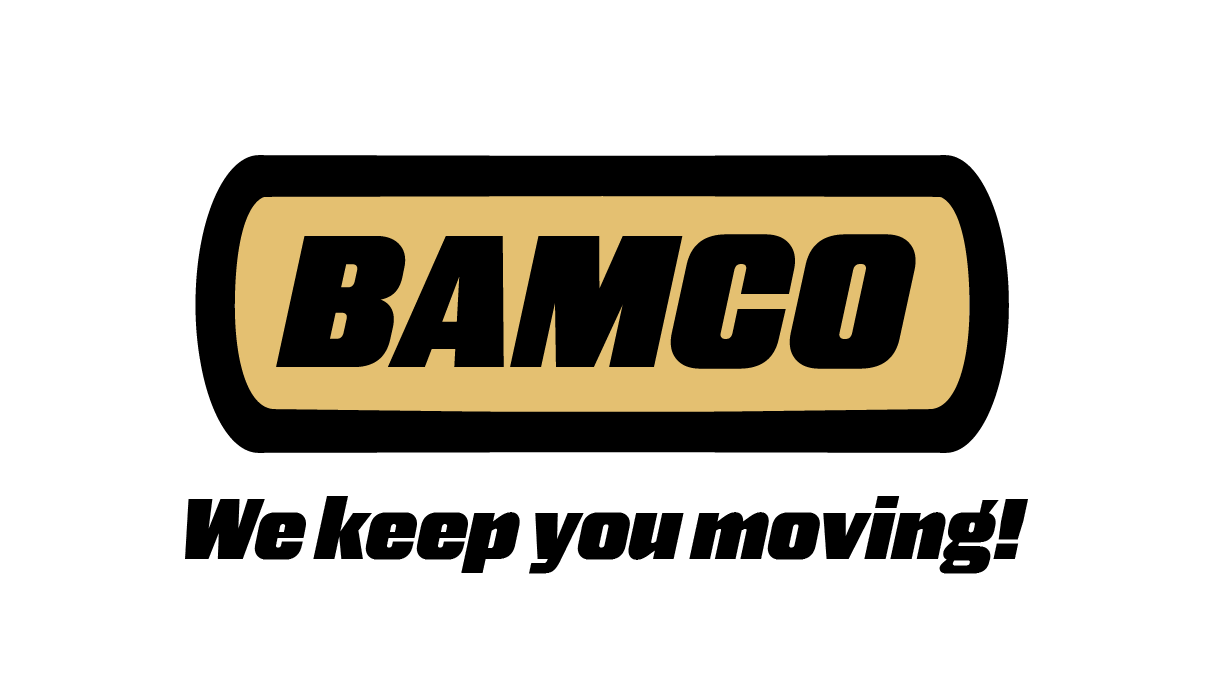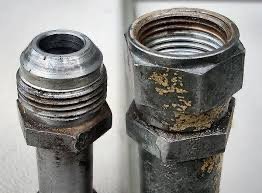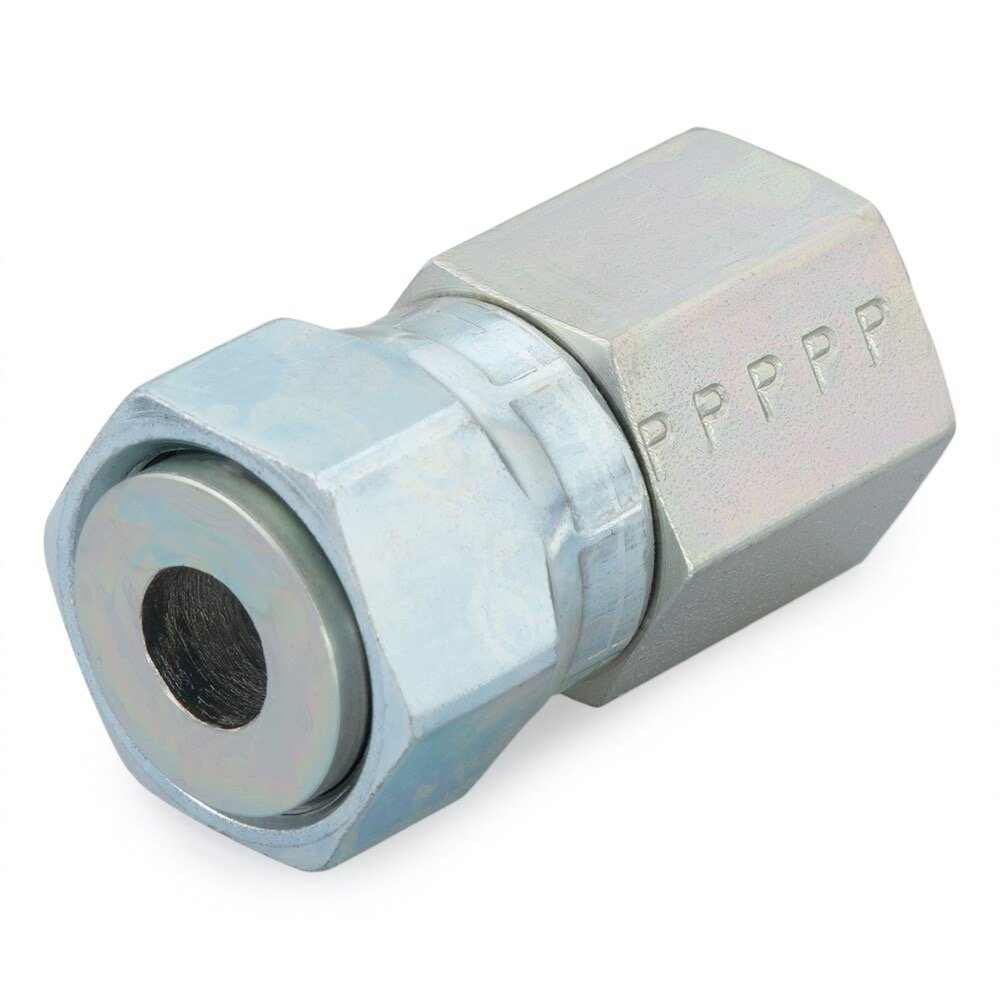When dealing with hydraulics, determining which fitting you are dealing with may seem overwhelming in comparison to identifying the hose. There are usually no SAE specs when looking at a fitting. When dealing with braided hose on American equipment, you will usually be using one of three fittings; JIC, FOFS, or NPT.
Joint Industrial Connect (JIC)
To start, we need to talk about the Army-Navy Fitting. This fitting was produced prior to and became the standard during World War 2 . In 1950, the Joint Industry Council would standardize this fitting to where it became the JIC that we know today. Defined by SAE J514 and MIL-DTL-18866 standards, these fittings are threaded and have a 37 degree flare to the seating surface. JIC fittings are generally Made out of steel, stainless steel, brass, Monel, aluminum, and nickel. There are 3 crucial parts to these fittings:
Fitting
Flare Nut
Sleeve
Similarities/Differences with other fittings
Army-Navy Fitting: The JIC is identical to the Army-Navy fitting, however the JIC is made with less demanding tolerances and therefore is generally cheaper. An army-navy fitting can be used in place of a JIC, however, a JIC can not always be used in place of an army-navy fitting.
SAE 45 Degree Fitting: These fittings often have the exact same thread pattern as the JIC. However, due to the seat angle being different, these fittings are not interchangeable. With that being said, some couplings are dual machined so that you have both 37 and 45 degree seat angles.
Komatsu: These fittings use a 30 degree seat flare but the threads are in millimeter thread sizes.
JIS: Also has a 30 degree flare but uses a British pipe standard thread sizes.
Disadvantages of JIC Fittings
They have a lower pressure rating than needed for certain applications
Over-tightening can cause flare damage and cracking.
Metal to metal sealing design limits media to hydraulic, fluid, and non-critical applications.
Advantages to JIC Fittings
They are at every hydraulic store in the U.S. and commonly in stock.
Sizes are consistent with SAE which makes them interchangeable and easy to identify.
No o-ring means that they can be used in high temperature settings.
Many different shapes, sizes, and material compositions.
They can be disconnected and reconnected multiple times without damage to the fitting.
National Pipe or National Pipe Tapered (NPT)
These fittings are over 100 years old and were originally used in the plumbing industry. Since then, there fittings have been converted over to hydraulic and gas use. NPT fittings are defined under AMSE B1.20.1. Unlike standard threads, the tapered threads on these fittings give them a more reliable seal. The taper rate on NPT fittings is 3/4“ per foot or 1/16” per inch. The connection with these fittings requires thread deformation, which means that these fittings cannot be used in applications with constant disassembly and reassembly.
NPt defining features
The taper angle is 1O 47’ (measured from the center axis of the NPT fitting)
Flat crests and troughs
60 degree angle between each crest and trough
The outer diameter of an NPT fitting is measured at the midpoint of the taper
Pitch (the distance between threads) is measured in threads per inch (TPI)
Disadvantages of npt
More difficult to orient shaped connectors
Not suitable for the highest pressure
Over tightening can cause port expansion or cracking
Can not be re-assembled without sacrificing sealing performance
Thread lubricant can cause system contamination
Advantages of NPT
Commonly available in American markets.
Simple assembly without flaring tubes, sleeves, or the use of seals and O-rings.
Many different shapes, sizes, and material compositions
O-Ring Face Seal (FOFS/ORFS)
These are fittings made to the SAE J1453 standard. FOFS fittings are made out of carbon, nickel plated carbon & Stainless steel with Buna-N or Viton, 90 Durometer O-rings that sits in a groove in the face of the fitting. This is an elastromeric seal or a seal created when the o-ring is compressed between the O-ring face and the flat face of the mating fitting.
similarities/differences with other fittings
Metric Fittings and ISO 9974 are also an elastomeric seal but they use a grove recessed into the fitting body.
Flange fittings also have an O-ring but are bolted down instead of connected using threading.
Disadvantages of ORFS Fittings
The temperature rating is determined by the O-ring seal material.
Ineffective in high temperature operations.
Advantages of ORFS Fittings
Highly available in a plethora of shapes, sizes, and materials.
No risk of leaks in hydraulic systems with high operating pressures. Essentially a leak proof alternative to the SAE 37 degree flared tube fittings.
O-ring absorbs shock better than any metal to metal fittings
Flat face connection design along with the replaceable o-ring makes ORFS fittings easy to reuse and maintain in the field.
Can be torqued as much as 200% without damaging the fittings making them resistant to over-assembly.
Can be connected to a plethora of tubing grades by silver brazing or forming.
How To Tell The Difference
The first thing you will do is determine the brand of equipment you are using. If it’s American, odds are you won’t see BSPP, Komatsu, JIS, or other similar fittings. Next, you will look at the SAE rating of the hose. If you are working with braided hose, that will rule out all of the flange fittings. Now what does the fitting look like? Is there a grove on the face of the fitting for an O-ring? Or does it have a large, flat face? Odds are it is a ORFS.
Does the fitting appear to be just a threaded pipe at the end? No O-ring or angled face? Odds are it is an NPT.
Does the fitting have an angled face with no o-ring? Odds are it is a JIC.



